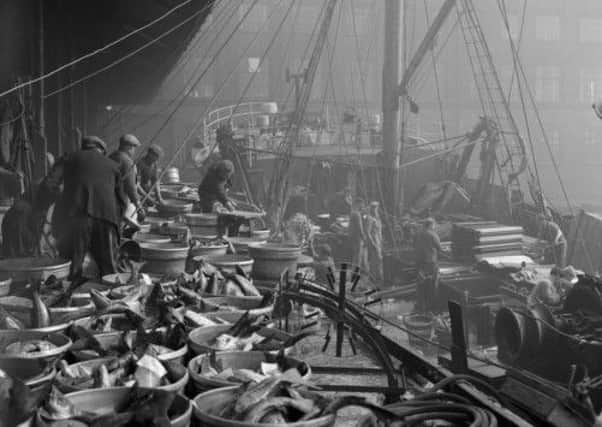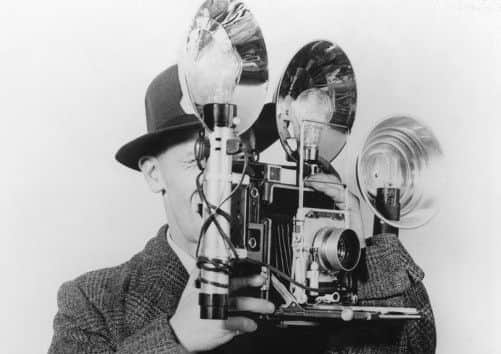Through Hull and high water


Standing just 5ft 5in with a huge camera and flash slung round his neck and his trademark trilby pulled low, Donald Innes’s face was often obscured.
Yet everyone in Hull knew who he was and so did every picture editor in Fleet Street. Donald looked like he’d stepped from the pages of a Raymond Chandler novel and the author couldn’t have written a more colourful character.
Advertisement
Hide AdAdvertisement
Hide AdA renowned freelance Press photographer, he often remarked that his pictures weren’t the best but his nose for news and his ability to sell were legendary. From the 1940s to the 1960s he had East Yorkshire covered. From ships sinking in the Humber to the Beatles playing the ABC, he captured it on film and sent the pictures to the world via his own photo wire, one of the first in the North.


“He was a tremendous personality,” says his son Ivor, also a photographer and head of Innes, the company his father founded. “He looked like a sherpa thanks to all his equipment and he always wore an overcoat, trilby and camera. He was small, energetic and he smelled of cigarettes and whisky. He was your archetypal Press photographer of that era.”
He was also a good businessman and would only take a picture if he knew he could make money from it.
“A typical example was a ship sinking in the Humber, as they often did. He’d get a boat to take him out, then he’d get back and call all the papers saying: ‘It’s Donald from Hessle here. I’ve got a picture of a ship sinking and the boat hire cost me £20’. They all told him to put it on expenses and he’d charge all 10 papers the full amount.
Advertisement
Hide AdAdvertisement
Hide Ad“He got away with it and that was helped by an infectious wit.”
His sense of humour carried him through a difficult time when in 1947, at the age of 39, he shocked his wealthy family by resigning as company secretary of their shipping business Stonehouse and Cory to pursue his passion for taking pictures. His decision to turn his hobby into a career caused a five year rift with his father.
“It was a difficult situation. Not only did he leave the family firm, he married my mother who was an actress at the Hull Rep and that fuelled the dispute because marrying an actress wasn’t the done thing,” says Ivor. “Even before that he was ducking and diving, sneaking out of work to his dark room. But even after they had fallen out my grandfather cared enough to quietly buy the building that my father leased for his studio. He wanted to make sure his son was all right.”
The building in Hessle is still home to Innes, which specialises in commercial work and is best known for its food photography. It also has a contemporary homeware showroom.
Advertisement
Hide AdAdvertisement
Hide Ad“I loved taking pictures and that’s why we’re still here but I didn’t have the stomach for news like my dad did,” says Ivor, who has put a selection of his father’s photos online for sale as frameable prints or canvases.
The Heritage collection sits alongside Ivor’s own images, including a best-selling print of the Humber Bridge, which opened in 1981, 11 years after Donald’s death. “He would’ve loved it. Before then you had to get the ferry or travel 80 miles to get round.”
Donald’s photo of football fans, travelling to watch Hull v Grimsby, shows them crowding off the ferry in 1949. There were 46,282 at the game.
Another match picture shows Hull supporters queueing to get into Boothferry Park for the sixth round FA Cup tie against Manchester United in 1949. There was a record crowd of 55,000.
Advertisement
Hide AdAdvertisement
Hide AdMany shots show supporters looking towards the camera thanks to one of his tricks. He would fire off a flash, even though it was a waste of an expensive bulb, so when the fans looked round at it he could take the picture for real.
Donald often covered the news and sport agenda alongside Yorkshire Post photographer Wilbur Wright.
“They were both wily. One Royal visit dad found a spot and all the other photographers followed him. Then he’d move at the last minute to where he really wanted to be and have the space to himself. When I was helping dad out Wilbur would say: ‘what exposure are you giving son?’ I’d look down and then he’d creep in front of me and get the shot,” says Ivor.
The Innes archive includes the 1959 Easter landing of fish at St Andrew’s Dock. A trophy was awarded to the skipper who caught the most.
Advertisement
Hide AdAdvertisement
Hide AdThere is also a picture of the terrible Cocoa Mills fire in 1948 that killed 10 people and a stunning shot of a steam engine in the snow, when Nafferton, was cut off for weeks in the winter of 1958. The line was cleared so the train could get through and deliver food.
“He had a high frequency radio in his car so he could listen in to police messages. He’d always be shooting off somewhere,” says Ivor.
Donald’s photographs, which included stars like Adam Faith, the Fab Four and Cliff Richard, appeared in most of the national newspapers, and ensured Hull wasn’t forgotten by the rest of Britain.
He was one of the first to have a wire and photographers came from all over north of England in the 1950s to use it. He also managed to get a 5x4 Speed Graphic camera from America, which he smuggled into the country in bits via a friend who regularly travelled there.
Advertisement
Hide AdAdvertisement
Hide AdIt was all part of an impressive photographic legacy left when he died in 1971 at the age of 63. “He was quite young when he died but it’s not surprising given his lifestyle,” says Ivor, whose children all work in the family business. “None of them are photographers but some of my grandchildren are showing an interest. My dad would be pleased about that.”
For details of Donald Innes’ Heritage prints visit www.innes.co.uk/artprints/